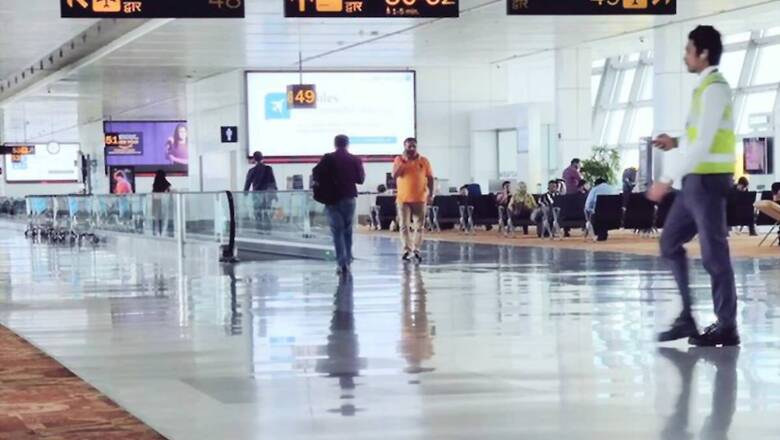Aggressive Pricing, Return of B737 MAX, Air India Sale: 7 Trends to Watch Out for in Indian Aviation

views
As India’s vaccination efforts gain traction, more people are taking to the skies. Yet, the passenger volumes only tell part of the story. The foundation for Indian aviation continues to be fragile with rising fuel costs, tough financing environment, all-but-certain rise in airport costs and a declining quality in demand. The industry continues to bleed and corporate demand remains at an all-time low. Observers and experts alike are tracking movements carefully and there are seven main trends to watch out for:
1. Ticket prices will remain at current levels, at least till April
For airlines, ticket revenues are a combination of airfares and occupancy. In an ideal scenario, both are high. That is—more people flying and buying more expensive tickets. Yet over the last few years, prices have been discounted to drive volumes. Currently, the Indian government has mandated price floors and price caps— which means airlines cannot charge below/above a certain fare level. Overall occupancy (referred to as load factors) that measures how many seats per aircraft are occupied is in the 62-68 per cent range, but on a sector-basis fluctuates widely. Indeed on some sectors, the flight may be completely full while on others it may only have a few seats occupied. And as we head towards the April to June quarter (first quarter), booking volumes are looking weak. With the rising Covid-19 cases and the arrival formalities, it is likely that bookings may fall further. International skies remain shut. Thus, on the revenue scenario, airlines continue to struggle. The government recently announced that the price-caps will remain till the end of April.
2. Input costs are rising
For airlines, key costs include fuel, maintenance, foreign exchange and borrowing costs. Fuel costs are gradually moving up. Maintenance costs are down but for several airlines these costs are being deferred. This only means the costs will come back to haunt at a later date and have to be provisioned for.
ALSO READ| Indian Airports Need an Upgrade, but Next Round of Privatisation Faces Unique Challenges
On the foreign exchange front, the dollar is likely to strengthen further causing much pain to India’s airlines. It is important to keep in mind lease payments, maintenance payments and significant portion of the financing is in dollars while revenues are in rupees. And, the natural sources of foreign currency inflows for airlines—financing income and international income—have dried up. Therefore, the foreign exchange pressure is likely to remain.
Finally, airlines continue to sit on excess airplanes thereby owning airplanes that are not generating cash.
3. Air India sale gaining steam
2021 may be the year when we finally see the sale of Air India. But indications are this will happen towards the end of 2021 which means that the Air India capacity will continue to be accounted for in the system. February numbers show the airline flew 9 lakh-plus domestic passengers which was a 14 per cent increase over January. This was the highest increase for any domestic airline. Airlines like SpiceJet, AirAsia India and GoAir saw their passenger numbers decline.
Air India schedules already show deployment of large aircraft on domestic routes which translates into more capacity chasing depressed demand. Further, to prep for sale, if the government has to show an even higher market share, it could mean deployment of more domestic capacity in an already challenged market. A boon for consumers, but for the industry this is likely to cause further harm.
4. The Boeing factor: Return of the B737 MAX
2021 will see the return of the Boeing 737 MAX to the Indian skies. With the FAA certification, the aircraft has already been approved by other regulators. Yet teething issues remain. Industry estimates indicate that India, at most, will receive four or five units before deliveries are ramped up. That too is contingent upon a lot of things going right. The jury is still out on how passengers will accept this aircraft once it returns. Jet Airways may resurrect itself based on an all 737-Max proposition.
For existing players, SpiceJet is the only airline with Max orders. It is also one of the most aggressive when it comes to discounting. Thus, if these aircraft are inducted in an accelerated manner, the industry will continue to see erosion of pricing power.
5. A return to lower airfares, likely in second half of 2021
India’s airline industry in the past two years has seen a convergence of ticket prices. Low-cost airlines like Indigo and SpiceJet that have historically led with low-ticket prices but minimal amenities are now seeing full-service airlines also mimic their pricing strategy.
On the domestic front, voluminous airplane orders by Indigo, GoAir and SpiceJet only mean that the number of flights will likely rise. Further airplane induction from Vistara, AirAsia India and Air India will exacerbate this situation. The failure of Jet Airways did not provide any respite from the unabated growth of flights as all those domestic flights returned to the market within five months. A revived Jet Airways or a new airline startup only means more capacity.
ALSO READ| Covid-19 a Perfect Opportunity for Indian Airports to Stop Aping Western Models and Turn Atmanirbhar
All of this capacity requires that airlines do their best to fill it. And without a strong brand, without strong loyalty programmes and without any core differentiation, airlines are likely to resort to their tried-and-tested tactic to stimulate demand—discounting. Lower airfares will return. It is not a question of if rather when.
6. International skies once opened up will see intense competition
On the international front, from Emirates to VietJet everyone is chasing the huge Indian travel base. Airlines from the Middle East have always dominated capacity—this figure in the best of times was estimated to be up to 70 per cent. But as the Middle East itself faces challenges including declining oil prices, declining demand, rise of low-cost airlines, the strategy now is to capture a greater portion of the demand that is willing to pay a premium price. To this end, airlines like Qatar and Emirates have unbundled fares even in the business class and are introducing premium economy seating. Pricing is expected to be very aggressive—and India’s airlines will be forced to match the pricing—without the backup of a loyalty programme, a global network or secured financing. Overall, keeping aside regulatory barriers, India’s airlines and their international ambitions are likely to face an uphill climb.
7. Path to profitability for airlines remains foggy
In 2021, the path to profitability for India’s airlines remains foggy at best. As costs rise with revenues being lower than overall costs, news reports of dues, requests for funding and legal action have already started percolating. Banks continue to be wary of aviation as a whole. And for the airline industry, this situation is likely to get worse before it gets better. On the revenue front, domestic traffic is propped up by reduced rail capacity and pent up travel demand. Both of these are temporary. This means once restrictions are lifted, the impact will be negative on airlines.
Overall, it is likely that airlines will revert to their old ways of business. Including aggressive discounting, a disproportionate focus on profit and loss, managing to maximize near-term cash-flow, not addressing balance sheet woes and short-term thinking. Airline failures and defaults cannot be ruled out. For the airlines that do make it, the year ahead is likely to be an extremely turbulent ride.
Read all the Latest News, Breaking News and Coronavirus News here




















Comments
0 comment